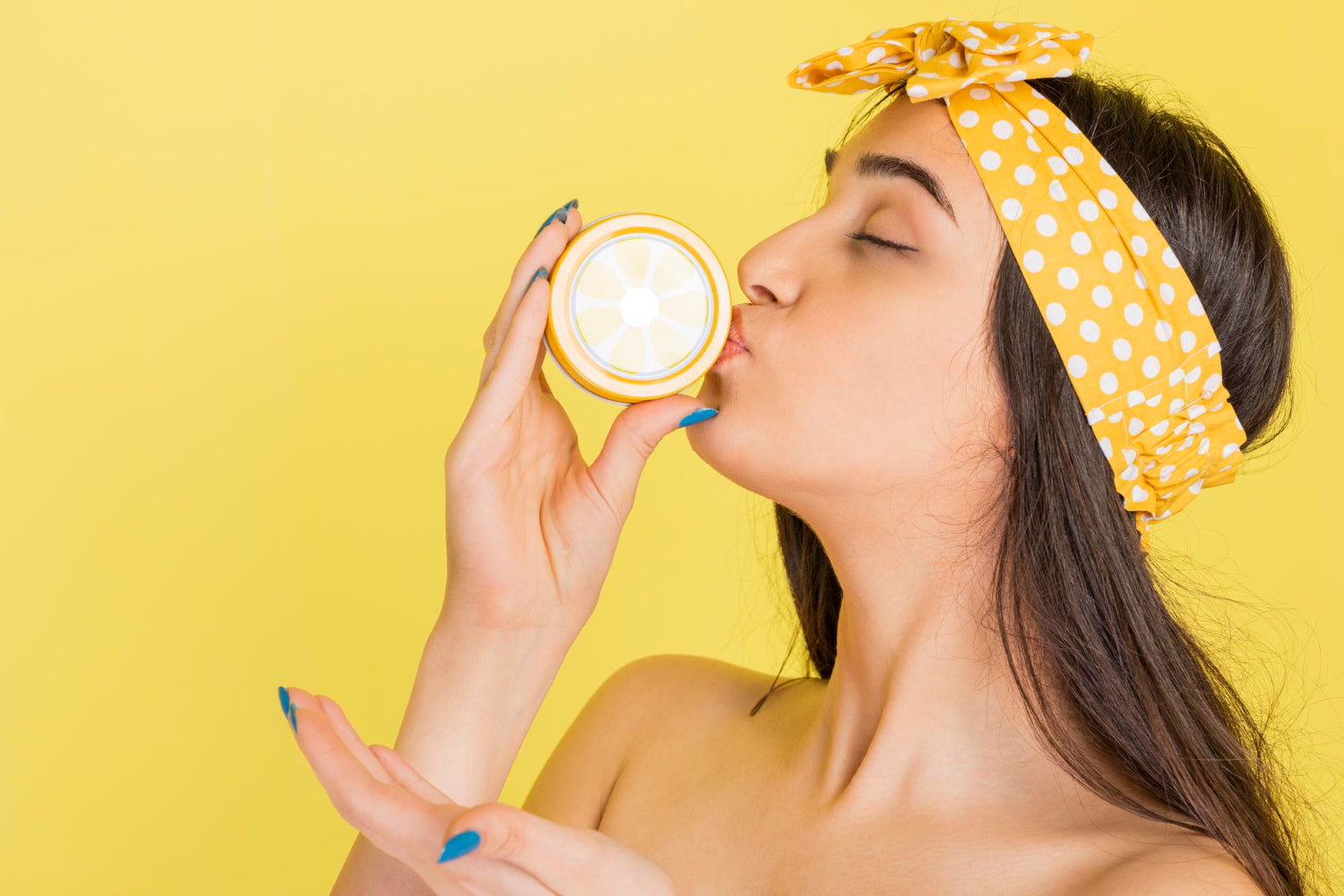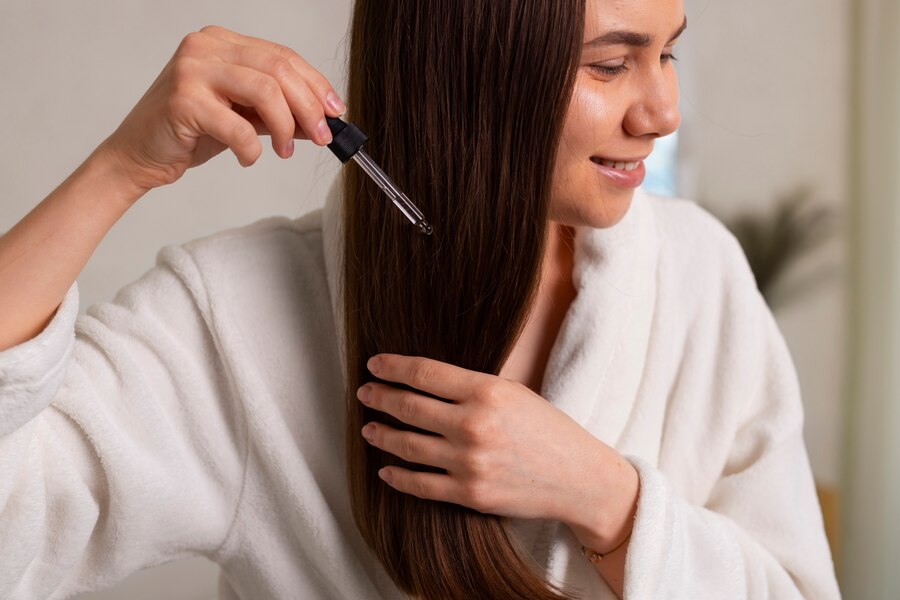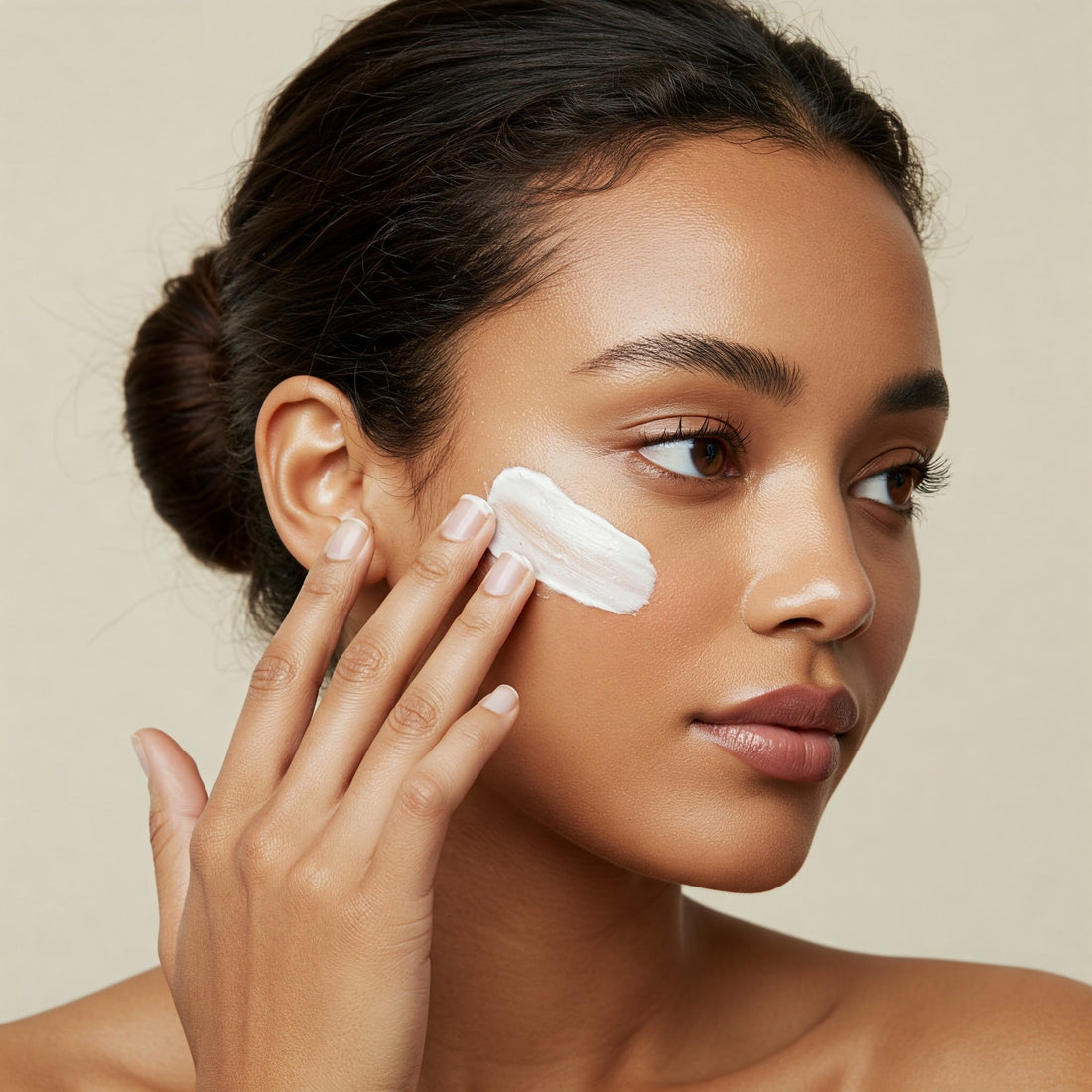Navigating the world of skincare can be confusing, especially when it comes to layering products. One common question is whether to apply sunscreen or moisturizer first. This blog aims to clarify the correct order and explain the science behind it, helping you achieve the best results from your skincare routine.
What Goes First, Sunscreen or Moisturizer?
The general rule of thumb is that sunscreen should be the last step in your skincare routine. Sunscreen acts as a protective barrier against harmful UV rays, and applying it last ensures it can effectively shield your skin without being diluted or hindered by other products.
What's The Difference Between Sunscreen and Moisturizer?
- Sunscreen: Designed to protect the skin from UV radiation, sunscreens come in two main types: chemical and physical. Chemical sunscreens absorb UV rays, while physical sunscreens reflect them.
- Moisturizer: Its primary function is to hydrate the skin and repair the skin barrier. Moisturizers contain ingredients that help retain moisture, keeping the skin soft and supple.
What’s The Difference Between Chemical vs. Physical Sunscreen?
- Chemical Sunscreens: Contain organic compounds like avobenzone and oxybenzone that absorb UV radiation and convert it into heat, which is then released from the skin.
- Physical Sunscreens: Contain mineral ingredients like zinc oxide and titanium dioxide that sit on the skin's surface and reflect UV rays.
Both types have their benefits and drawbacks, such as chemical sunscreens being lightweight but potentially irritating, and physical sunscreens being more suitable for sensitive skin but sometimes leaving a white cast.
Why is Sunscreen So Important?
Regular sunscreen use is crucial for protecting the skin from:
- Skin Cancer: UV exposure significantly increases the risk of skin cancer.
- Premature Aging: UV rays can accelerate aging, leading to wrinkles and fine lines.
- Sunburns: Sunscreen prevents painful sunburns and long-term damage.
Can I Mix Sunscreen with Moisturizer?
Mixing sunscreen with moisturizer is generally not recommended as it can dilute the effectiveness of the sunscreen. Instead, use a hybrid product if convenience is a concern.
Is It Necessary To Apply Moisturizer Before Sunscreen?
Applying moisturizer first helps to keep the skin hydrated and provides a smooth base for sunscreen. This ensures that your skin is well-moisturized before the protective barrier of sunscreen is applied.
How to Apply Sunscreen to Your Face and Neck?
1. Cleanse Your Face: Start with a clean face.2. Apply Moisturizer: Apply your moisturizer and let it absorb.
3. Apply Sunscreen: Use a generous amount of sunscreen (about a teaspoon for face and neck) and spread it evenly.
4. Cover All Areas: Ensure all exposed areas, including ears and neck, are covered.
Why Do I Need Both Moisturizer and Sunscreen in My Skincare Routine?
Moisturizer preps the skin by providing hydration, while sunscreen protects it from UV damage. Together, they ensure your skin stays healthy, hydrated, and protected.
Is It Okay To Leave Sunscreen & Moisturizer on My Face All Day?
Sunscreen should be reapplied every two hours, especially if you're outdoors. It's also important to cleanse your face at the end of the day to remove product buildup and prevent clogged pores.
Can I Wear Makeup Over Sunscreen?
Yes, makeup can be worn over sunscreen. Allow the sunscreen to fully absorb before applying makeup to ensure it doesn't interfere with the sunscreen's effectiveness.
When Do You Apply Sunscreen in a Skincare Routine?
Sunscreen should be the last step in your skincare routine, applied after all other skincare products.
Do I Need To Apply Sunscreen If I Wear Makeup?
Yes, sunscreen is necessary even if you wear makeup with SPF, as the SPF in makeup is often not sufficient for full protection.
What’s The Best Sunscreen to Wear with Moisturizer?
1. Thatmatt Hybrid Sunscreen SPF 50++++
- Benefits: Provides blue light protection, and infrared protection, and has a UVA-PF 17 and RSF 19 rating with a 5 Boots Star Rating. Sun protection SPF 50 offers protection against urban and digital pollution, blocks IR and blue light-induced free radical formation, protects mitochondrial DNA, inhibits light-induced skin aging, and prevents the loss of skin density upon sun exposure.
- Mechanism of Action: Contains zinc oxide, titanium dioxide, and bemotrizinol, which provide broad-spectrum protection without being absorbed into the skin.
- Application: Apply 4 drops in the morning and reapply every 4 hours.
2. Sunstalker Korea 3-1 Water-Based Moisturizer | Serum | Sunscreen SPF50+++
- Benefits: Combines the functions of a moisturizer, serum, and sunscreen. Serum moisturizer sunscreen hydrates while providing UVA/UVB protection.
- Usage Instructions: Apply liberally and evenly on the face, neck, and exposed skin 20-30 minutes before sun exposure. Use a pea-sized amount for the face and proportionate amounts for other areas.
3. Mucin SPF 50+++ World’s First Snail Mucin Sunscreen
- Benefits: Provides UV protection while hydrating the skin with hyaluronic acid, brightening with glutathione, and enhancing skin barrier function with ceramides. Snail Mucin spf 50 suncreen that offer anti-pollution benefits and support skin health.
- How to Use: Apply 2 finger lengths on the face and neck, 15-20 minutes before sun exposure.
What’s The Best Moisturizer to Wear with Sunscreen?
1. SkinDam Korean Moisturizer with Ceramide 3
- Benefits: Contains all components needed to restore and maintain a healthy skin barrier. Barrier repair face cream tackles dryness, water loss, and irritation.
- Application Instructions: Apply a pea-sized amount uniformly over the face and massage until fully absorbed.
2. Youthburst Clinically Approved Water Gel Moisturizer
- Benefits: Water Based Moisturizer for oily skin provides long-lasting hydration, oxygenates the skin, smooths wrinkles, and enhances skin tone.
- Application Instructions: Apply a sufficient amount to cover the face, and massage gently.
3. Aquavault Body Cream
- Benefits: Enriched with vitamins and shea butter, Body moisturizing cream hydrates, soothes sunburn, and helps with eczema. Contains aloe vera for infection protection.
- Application Instructions: Apply generously over the body, focusing on dry and irritated areas.
What Kind of Moisturizer Do You Need?
Choose a moisturizer based on your skin type and specific needs:
- Dry Skin: Look for products with rich, hydrating ingredients like ceramides and hyaluronic acid.
- Oily Skin:Opt for lightweight, non-comedogenic moisturizers.
- Sensitive Skin: Choose fragrance-free and gentle formulations.
Takeaways for Wearing Sunscreen with Moisturizer
- Use Both Products: Both sunscreen and moisturizer are essential for optimal skin health.
- Layer Correctly: Apply moisturizer first, followed by sunscreen.
- Reapply Sunscreen: Reapply sunscreen every two hours for continuous protection.
Level Up Your Skincare with Moisturizer & Sunscreen Every Day
Incorporating moisturizer and sunscreen into your daily routine is crucial for maintaining healthy, hydrated, and protected skin. The long-term benefits of consistent use include reduced risk of skin damage and a more youthful appearance.
FAQs
Q. Can I use a moisturizer with SPF instead of sunscreen?
A. While convenient, a dedicated sunscreen provides more reliable protection.Q. How much sunscreen should I apply?
A. Use about a teaspoon for your face and neck, or follow the two-finger rule.Q. Can I skip moisturizer if I have oily skin?
A. No, even oily skin needs hydration. Choose a lightweight, non-comedogenic moisturizer.Q. What’s the difference between SPF 30 and SPF 50?
A. SPF 50 offers slightly more protection than SPF 30, blocking about 98% of UVB rays compared to 97%.Q. Is it necessary to wear sunscreen indoors?
A. Yes, UV rays can penetrate windows, so daily sunscreen use is beneficial.Conclusion
Understanding the correct order of applying moisturizer and sunscreen is key to an effective skincare routine. By using both products appropriately, you can protect your skin from damage while keeping it hydrated and healthy. Prioritize your skin health by incorporating these essential steps into your daily regimen.











